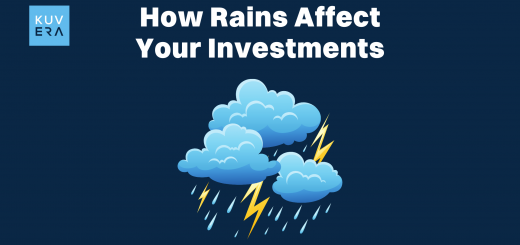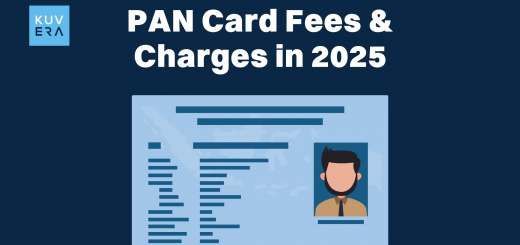Introduction
Before we understand what an expense ratio is and when an expense ratio is considered as good, it is necessary to understand what mutual funds are and what are the benefits of investing in mutual funds.
How Do Mutual Funds Operate?
Subscribers to this fund or scheme are investors who wish to invest in these sectors. The fund manager will rake in cash from tens of thousands of investors. He will next use this sum of money to make investments in line with the fund’s purpose. Bonds, large-cap stocks, mid-cap stocks, etc. This is the underlying portfolio of the fund.
The fund management does not buy a single stock with the full corpus. He diversifies or divides the acquired funds among various stocks. In this manner, a stock’s loss might be offset by its gain in another. The fund manager’s responsibility is to keep an eye on this portfolio and adjust it as needed. All gains, losses, and expenses in a mutual fund are distributed equally among unitholders. Because of this, mutual funds are among the most affordable investment solutions available in India.
Let’s use this straightforward example to explain how a mutual fund functions
Let’s say you wanted to purchase a pizza. The pizza’s cost is INR 1,000. But you only have around INR 100. Therefore, you and your nine pals agree to chip in INR 100 each to purchase the pizza. You all receive one slice of pizza each.
In this illustration, pizza slices stand in for mutual fund units. You, along with your nine friends, buy shares in a mutual fund scheme. The fund house is the pizza business. Mutual funds are given to investors in the same variety as pizzas.
The fund’s Net Asset Value (NAV) is equal to the cost of one pizza slice. The market value of one mutual fund unit is known as NAV. The market value of your investment is determined by multiplying the total number of units by the NAV.
Where Does The Mutual Fund Manager Invest The Funds?
Depending on the type of mutual fund scheme, the money raised is invested in several asset classes, we have explained the two most important categories below:
-
Equity Mutual Funds
Shares of various businesses are purchased with the corpus of an equity mutual fund. Equity mutual funds are relatively high in risk and best suited for investors which have a high-risk appetite because their underlying assets, equities, are volatile. Large-cap funds, mid-cap funds, and small-cap funds are further categories for equity mutual funds.
-
Debt Mutual Funds
In the case of Debt Mutual Funds, the corpus is invested in fixed income securities like Government bonds as well as bonds and debentures issued by companies in the public and private sectors may. Debt Mutual Funds are more stable and less risky than equity mutual funds. They are appropriate for conservative investors because of the relatively lower amount of risk. Debt Mutu Funds invest in many fixed-income securities including.
- Commercial Papers
- Bonds
- Debentures
- Zero-Coupon Bonds (CPs)
- Non-convertible Debentures
- Certificates of Deposits (CDs)
- Treasury Bills,
- CBLO
- Government-issued sovereign bonds
Why Should One Invest In Mutual Funds?
For individuals with no background in or experience with the stock market, mutual funds are the ideal choice. The following are mutual funds’ key benefits:
- Professionally Managed: The primary benefit of mutual funds is that they are managed by knowledgeable fund managers in a professional manner. These managers employ specialised research groups that unearth profitable investment ideas. For the benefit of investors, fund managers make investment decisions. They want fund management fees in exchange. The fund’s NAV is subtracted from this fee. The fund manager’s goal is to outperform the fund’s benchmark and produce better returns for unitholders.
- Diversification: Mutual funds divide and distribute the combined sum to other businesses. They increase their chances of profit while lowering their overall risk by doing this. Diversification enables investors to use a single fund to invest in the growth of several different enterprises.
- Highly Liquid: How quickly you can sell an investment for cash is referred to as liquidity. There are two types of mutual funds based on liquidity: The majority of mutual fund plans do not require a lock-in period (a prominent exception is equity-linked savings schemes mutual funds, In the event of an emergency, you can always redeem your mutual fund units thanks to high liquidity.
- Convenient: Mutual Funds are incredibly practical and convenient. Lump sum investment is the option for investors to invest their full amount at once. Or they might use a systemic investment plan, which involves making small monthly investments (SIP).
- Affordability: The low cost of mutual funds is one of their main advantages. With as little as INR 100 per month, you can start investing in mutual funds through a SIP.
- Numerous Types: There are more than 29 different types of mutual funds available in India. Different mutual fund schemes exist to accommodate diverse risk profiles and investment goals.
What Is Expense Ratio?
The expense ratio, also known as annual operating expenses, is a ratio that assesses the expense of maintaining a fund on a per-unit basis. Simply described, it is an asset under management and a ratio of the fund’s total expenses. A two percent annual expense ratio, for example, indicates that two percent of the fund’s total assets will be utilised to pay operational costs each year.
Mutual funds are allowed to charge specific operating costs for running a fund under SEBI regulations. An in-depth understanding of the market is necessary to operate a fund. The fund is managed by a group of individuals, including analysts, fund managers, etc., in order to provide investors with higher returns.
These people keep tabs on the markets and the portfolio firms for the fund. When a fund’s asset under management is lower, the expense ratio will be higher. The contrary is also true, if the fund has more assets under administration, the expense ratio will be reduced.
What Is The Formula For Calculating Expense Ratio?
The expenditure ratio is computed by dividing the overall costs by the portfolio’s average value.
Total expenses minus the portfolio’s average value is the expense ratio. Let’s use an illustration to better grasp this.
Assume there is a fund firm with assets under management worth INR 10 Lakh. The fund house charges a management fee, an administrative fee, and additional costs totaling INR ten thousand in order to run the fund.
The above-mentioned formula would be used to determine this fund’s overall expense ratio: The expense ratio in this scenario is 1%. To further explain the aforementioned, 1 percent of the total assets must be paid out in order to run the fund. Naturally, the fund house’s return on the aforementioned investments must be higher for you to avoid losing money. If the expense ratio is 1 percent and the fund has generated a return on investment of 15%, you would receive a return of 14%.
What Impact Does The Expense Ratio Have?
The expense ratio, which is derived by dividing total expenses by total assets under management, represents the per-unit cost of administering the funds. The amount of money required to run the fund increases as the ratio rises. Reduced resources are being utilised to manage the same assets, according to a lower expense ratio. The take-home return will be lower if the spending ratio is higher and vice versa.
What Make Up The Expense Ratio’s Components?
Daily expenses incurred by the fund house are recouped from the investor. The investors are updated on this every six months. Your take-home pay is impacted by the expense ratio.
Management Fee
Investments made by the fund are subject to the decisions made by the fund managers. The management fee is the fee paid to these professionals, these professionals typically have multiple years of experience in the industry. The management fee essentially serves as these managers’ expertise-based pay. Typically, 5% to 1% of the entire asset under management is taken out as a management charge.
Administration Fee
These expenses are related to managing the fund. This depends on the overall fund assets and covers client communication, customer support, etc.
Distribution Fee
A mutual fund’s annual marketing or distribution fee is known as a distribution fee. This is accounted for in the fund’s overall expense ratio as one of its operational costs.
How Are Mutual Fund Returns Affected by the Expense Ratio?
The expense ratio shows how much the fund house bills each year to investors to administer the portfolio of investments.
These expenses are subtracted from the fund house’s revenue before being distributed to the investors. Before making an investment, it is crucial to conduct a thorough analysis of the mutual funds because this directly affects the return that is earned.
For example, if you placed Rs. 50,000 in a fund with a 2 percent expense ratio, you would have to pay the fund house Rs. 1000 to manage your investments.
What Effects Does the Expense Ratio Have?
Since it will be deducted from your return, it is crucial to thoroughly consider the implications of the charge. You will receive a lesser take-home from your mutual fund if the expense ratio is high. It should be emphasised that it has a direct connection to funding management.
Simply put, a greater ratio does not always indicate better fund management, which would result in bigger earnings. Higher returns can be achieved by mutual funds with lower ratios and trained individuals on their staff.
One purchases funds directly from the mutual fund firm under the direct plan of the mutual fund. With a typical plan, a commission is received from the mutual fund company when a customer purchases something through an advisor.
The expense ratio of the plan is then adjusted to recover this. Therefore, it’s crucial to properly assess the funds.
What Is Considered As A Good Expense Ratio?
Expense ratio varies from mutual fund to mutual fund, typically active mutual funds have a higher expense ratio whereas passive mutual funds have a lower expense ratio. It is also important to note that most mutual funds have two schemes direct and regular.
In the case of a regular scheme of a mutual fund, the mutual fund is sold/distributed through a distributor/broker/commission agent. The expense ratio of such mutual funds is substantially higher than that of the direct mutual funds’ scheme.
Those who desire to invest directly in a mutual fund scheme, without the involvement of a distributor or broker, may invest in direct plans. Investing in a direct plan is analogous to purchasing a product directly from the manufacturer, resulting in lower costs. Direct mutual funds have a substantially lower expense ratio.
Typically most passive funds have an expense ratio which is lesser than 1 percent, often as low as 0.3%. Most active mutual funds on the other hand have an expense ratio higher than 1 %.
FAQs
-
How Can I invest in the direct scheme of a mutual fund?
You can invest in the direct scheme of mutual funds through zero commission platforms such as Kuvera. You can explore and invest in thousands of mutual fund schemes through Kuvera.
-
What are direct mutual fund plans?
Those who desire to invest directly in a mutual fund scheme, without the assistance of a distributor or intermediary, may invest in direct plans. Investing in a direct plan is analogous to purchasing a product directly from the manufacturer, resulting in lower costs. Direct mutual funds have a substantially lower expense ratio.
-
What Are regular mutual funds?
Every mutual fund has two schemes in the case of the regular scheme of a mutual fund, the mutual fund is sold/distribute through a distributor/broker/commission agent. The expense ratio of such mutual funds is substantially higher than that of direct mutual funds.
Interested in how we think about the markets?
Read more: Zen And The Art Of Investing
Watch/hear on YouTube:
Start investing through a platform that brings goal planning and investing to your fingertips. Visit Kuvera.in to discover Direct Plans and Fixed Deposits and start investing today.
#MutualFundSahiHai #KuveraSabseSahiHai!










